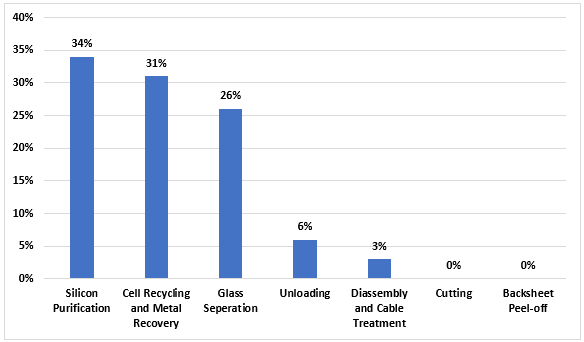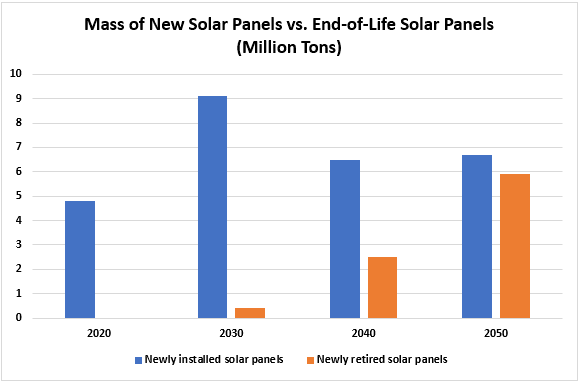- Home
- About Us
- Industry
- Services
- Reading
- Contact Us
Solar Panel Recycling: A Closer Look at Waste and Recycling in Renewable Energy
Author: Himanshu Patni
January 13, 2024
Solar power is booming. The global solar PV capacity increased from 1.4 GW in 2000 to 760 GW in 2020, and solar power currently generates nearly 4% of the world’s electricity. Currently, more than 90% of photovoltaic (PV) panels depend on crystalline silicon and have a life span of about 25 years. These panel will reach their end-of-life after that period, thus creating an enormous amount of solar panel waste. However, the current technology to recycle these panels is insufficient and less cost-effective. PV panels comprise toxic materials, like lead, that can cause environmental pollution; still, many are dumped in landfills by the end of their life. They also incorporate valuable materials that could be reused to produce new solar cells, but these resources are mostly wasted today.
Solar panel recycling offers numerous benefits. Firstly, they reduce the electronic waste produced, thus contributing to the overall waste reduction efforts, and preventing the disposal of hazardous materials in landfills. Secondly, it reduces the need for raw materials to manufacture new panels. The materials retrieved from recycling can be used to manufacture new panels, reducing the demand for new materials and conserving natural resources. Moreover, it saves energy, which is utilized in extracting and processing raw materials, as less energy is required to recycle solar panels compared to removing raw materials. This results in energy savings and a lower carbon footprint associated with the manufacturing of solar panels.
Access sample report (including graphs, charts, and figures) – https://univdatos.com/get-a-free-sample-form-php/?product_id=53779
In addition to reducing the waste produced, recycling solar panels helps recover valuable materials, including silicon, glass, aluminium, copper, polymer, silver, compound semiconductors, and other materials. These materials can be further reused to manufacture new solar panels.
Energy Consumption of Recycling by Process


Another advantage of solar panel recycling is the opportunity to build a circular economy. In the solar panel industry, this concept means extending the lifecycle of materials used in solar panels, including silicon, glass, and metals.
To unlock the full potential of solar panel recycling, it is essential to invest in research and development of new recycling technologies that improve the efficiency and affordability of recycling processes. Governments and private companies worldwide are already doing this, with promising results. For example, in July 2023, UNSW Sydney engineers developed a new, more effective way of recycling solar panels, which have the potential to recover silver at high efficiencies.
For a detailed analysis of the Global Solar Panel Recycling Market browse through – https://univdatos.com/report/solar-panel-recycling-market/
Conclusion
Solar panel recycling offers various advantages, including a reduction in PV waste produced, the opportunity to build a circular economy, recovery of the materials used in solar panels, and the reuse of these materials to manufacture new solar panels. However, there are still a few challenges to recycling these panels, including economic feasibility, process efficiency, recovery of all the materials used in PVs, and use of toxic materials used in recycling some substances. Moreover, as global solar PV waste increases, recycling solar panels has become necessary. According to the UnivDatos Market Insights analysis, the surge in solar panel waste production and concerns related to the disposal of this waste in landfills is driven by the global scenario of the solar panel recycling market. As per their “Solar Panel Recycling Market” report, the global market is at a CAGR of 28% during the forecast period from 2023 – 2030 to reach USD 1,069.02 million by 2030.
Get a Callback
